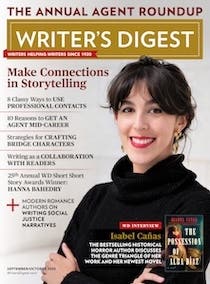Rondelet: Poetic Forms
Poetic Form Fridays are made to share various poetic forms. This week, we look at the rondelet, which is a French form with refrains and end rhymes. Rondelet Poems The…
Poetic Form Fridays are made to share various poetic forms. This week, we look at the rondelet, which is a French form with refrains and end rhymes.
Rondelet Poems
The rondelet is a typical French form with rhymes and refrains. Here are the basic guidelines for this poetic form:
- 7 lines
- Lines 1, 3, and 7 are refrains
- Refrain lines are 4 syllables long, other lines are 8 syllables
- Rhyme scheme: AbAabbA
*****
Master Poetic Forms!
Learn how to write sestina, shadorma, haiku, monotetra, golden shovel, and more with The Writer’s Digest Guide to Poetic Forms, by Robert Lee Brewer.
This e-book covers more than 40 poetic forms and shares examples to illustrate how each form works. Discover a new universe of poetic possibilities and apply it to your poetry today!
*****
Here’s my attempt:
promises, by Robert Lee Brewer
we were all told
to wait for things to get better
we were all told
our lead actions would turn to gold
and our desert thoughts get wetter
but there's no show for the letter
we were all told



